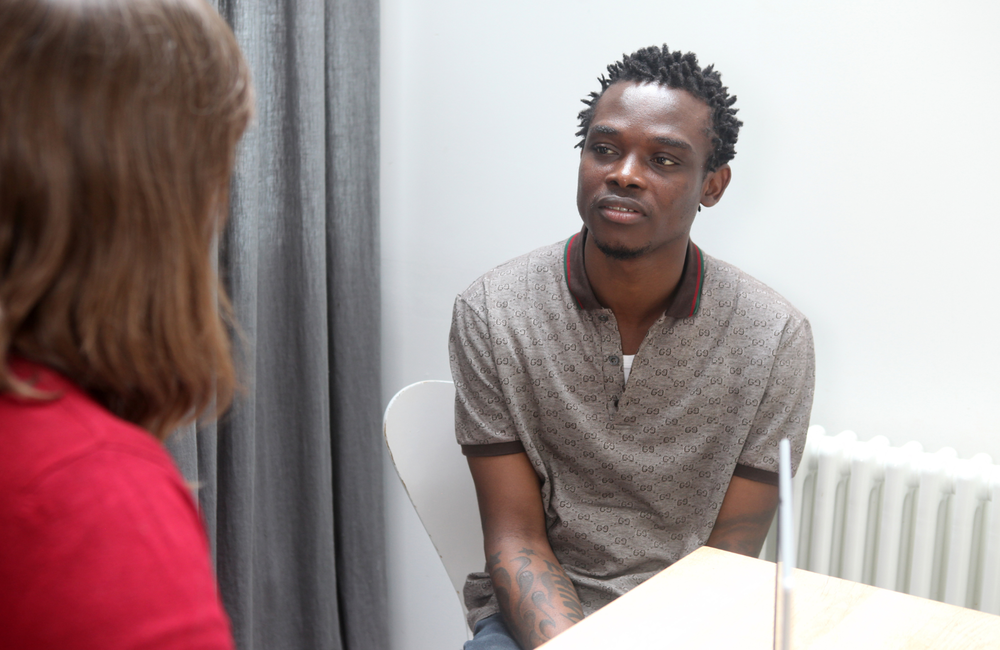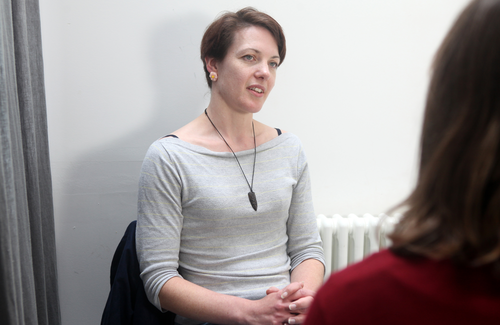
Experiences of participants in a US HIV cure-directed study with an extended analytical treatment interruption are reported in HIV Research & Clinical Practice. The researchers recommend that those designing HIV cure-directed trials should manage participants’ expectations and focus on the contribution they are making. Providing psychosocial support to participants must also be considered, as well as preparing them for the mental health impact of viral rebound.
Whereas people taking part in cure-directed trials are often White and male, this study is notable for reflecting the experience of Black participants in the US.
HIV cure-directed research – studies working towards an HIV cure, although a cure is unlikely to occur in current trials – is trying to reach one of two end goals. These are either complete elimination of HIV from the body or durable virologic suppression while off antiretrovirals. Several strategies are being tested, including immune-based approaches (such as broadly-neutralising antibodies, or bNAbs), cell and gene therapies, latency-reversal agents (reversing the latency of HIV-infected cells from the HIV reservoir to allow their killing by immune responses), permanent silencing agents (to permanently disable HIV-infected cells or suppress their ability to produce new viruses), or combinations of these strategies.
Whatever the strategy, testing its efficacy often requires that trial participants interrupt their antiretroviral therapy and are closely monitored. This approach is called an analytical treatment interruption (ATI). It is justified in the absence of a biomarker – for example, a sign detected in the blood – that can predict post-treatment viral control. Until such a marker is discovered, researchers can only rely on how long the viremia remains suppressed, from the moment antiretroviral therapy is stopped to the first viral load rebound.
Some ATI approaches may also require that, after rebound, viremia remain detectable for a while. This is the case when researchers want to observe the immune response to the intervention, which may take some time to appear. This extended ATI has physiological and psychosocial risks for trial participants, such as anxiety about potential progression of HIV disease and the risk of transmitting HIV to sex partners.
Careful monitoring – frequent trial visits, biological sampling – of participants is therefore required during and after an ATI, as recommended by a group of scientists and community advocates. However, while most efforts to understand and document participants’ perspectives have focused on short-term ATIs – lasting a few days to few weeks – little is known about people experiencing extended ATIs.
The BEAT2 trial is now contributing to filling this gap. Its objective was to evaluate the efficacy of a combined immunotherapy (two bNAbs and pegylated-interferon alpha2b) given for 24 weeks to adults with HIV who had stopped taking their antiretroviral regimens for the purpose of the study. After these 24 weeks off-antiretrovirals and on immunotherapy, participants were closely followed-up until the criteria to resume their HIV treatment – viral rebound – was met.
Community advocates involved in the trial design helped to co-create a socio-behavioural sub-study conducted by Dr Andrea Bilger from the University of Pennsylvania and colleagues. The researchers performed qualitative interviews with participants at two key timepoints in BEAT2: (1) shortly after enrolment, and (2) after participants had resumed antiretroviral therapy, following the extended ATI.
Findings from the interviews after enrolment have already been published and showed that participants were motivated by an altruistic desire to help find a cure for HIV and to benefit the HIV community.
The post-ATI interviews were conducted in 2022. They explored participants’ experiences during the trial and the extended ATI, expectations about the trial, experiences with antiretroviral restart, time and efforts put in the trial, hopes and worries and suggestions to improve the conduct of future clinical trials.
Results
All 14 participants in the BEAT2 trial – 11 men and three women (including one transgender woman) – completed the post-ATI interviews. Three were White and 11 were Black. Most were aged above 50 years old. The mean ATI duration was as long as 38 weeks.
Most participants said that their connection to the HIV community and a desire to prevent HIV transmission to others were the reasons why they had remained in the trial.
Trust between participants and the clinical research staff – perceived as caring, accommodating, effective communicators and trustworthy – was a key determinant of these motivations. This even made some individuals feel less concerned about adverse events during the trial, which at any rate were not reported as an issue by many.
“When I talk to them and they assure me that, “if anything was to take place, that we’ll go back to what it is that you need to do that, we’re not forcing you to make this decision, that this is definitely a decision on your own. If you don’t want to do it, you don’t have to.” So, that’s how I go along with my doctors, so if they feel like that, I’m going to be okay, I have enough trust in them that I believe that I’m going to be okay, and I was.”
“After dealing with the staff, I have to honestly admit, when going to my treatment and whatnot, they were so sweet, I mean, extra sweet. They were nurturing and they cared about their job. It wasn’t just a job for them and they would remember you by name.”
However, many participants said their expectations of the trial had changed since their enrolment interviews. For example, the trial was more time-consuming than they had thought. When participants felt that viral suppression during the ATI period was too short, some expressed disappointment in themselves – a feeling they had not expected when entering the trial.
“I kind of feel I let our community down. I mean, I’m not depressed about it, but I don’t know. I was hoping I make it through the whole three-month area and then I could stay off my medications, but I don’t know. I’m not saying I feel like a failure, but I just feel like I’d let the whole HIV community down.”
Participants’ perceptions of the ATI varied. In many cases they were positive as they had an undetectable viral load off-treatment, were not taking medications daily, did not have side effects and were involved in HIV research, as well as feeling hopeful about the future of HIV therapeutics. Others found comfort in the contribution they were making to science while not getting sick, despite an increasing viral load. Again, support from clinical staff was mentioned as easing nerves and fears during the ATI, which very likely facilitated participant retention in the trial.
Negative feelings were all attributed to increases in viral load after rebound: disappointment, frustration, annoyance, anger, discomfort, nervousness, “being scared” and even despair.
“…because I’ve been undetectable for so long. Even before the study, I’ve been undetected for such a long time and just to see those numbers go up like that, I was kind of worried like, okay, are they going to keep going up and not going to come back down, but they were certainly up, they are starting to decrease again, so and I just know that and a week or two, I think that I’ll be undetectable again, so.”
The significant step of resuming HIV medication also triggered varying positive and negative feelings, although the latter were limited to expressing disappointment for going back to taking anti-HIV pills.
“So, I’m back on a regimen that I didn’t have to be on. So, it was depressing to me. I’m like, I need this to survive… Do I like taking the pills? No.”
Relief was a common feature of positive feelings, up to bringing in a “peace of mind” with the return to the previous undetectable viral load status. A newfound appreciation for HIV treatment, which was no longer taken for granted, was also expressed.
“So, I felt safe, and it was nice to take a break from them, but I was glad to go back on them when the numbers went bad. So, fortunately, it didn’t take long for the numbers to get back up to good again. So, I got a greater appreciation for my regular ART.”
Interestingly, in a few cases, taking antiretrovirals was perceived as just an aspect of life with HIV, therefore not causing any particular emotion towards returning to them.
There were no significant concerns regarding trial procedures and logistics, and several participants appreciated the intense clinical monitoring – biopsies, eye exams, routine blood tests – in the trial that gave them insight into their clinical status. Overall, participants were satisfied with their financial compensation during the trial or did not feel it mattered to their participation. Importantly, regardless of effort put in the trial (from “minimal” to “a lot”), there was a prevailing sense that it was worth it for the trial outcomes. What mattered most was helping to find an HIV cure.
Participants did not have substantial suggestions for the improvement of future HIV cure-directed clinical trials. Experience with the clinical trial staff had been so positive that a strong wish to see an emulation of their clinical practices was expressed.
In their discussion, the investigators highlight that the BEAT2 trial is the first to report predominant enrolment of Black participants in an extended ATI in the US. They also note that altruistic motivations for participation were consistent in the enrolment and post-ATI interviews.
However, they raise some concerns:
- Some participants expressed hope for good personal outcomes, including having HIV removed from their bodies and their lives.
- Disappointment was felt by a few participants who experienced shorter post-ATI control than expected. Consequently, they also felt that they were failing research and their community.
These concerns bring them to underscore the need for research teams to manage participants’ expectations about potential outcomes of clinical trials and provide psychosocial support to reduce the risk of such feelings. Providing robust informed consent procedures and regular information to participants in early phase HIV cure-directed trials is also necessary.
“Continued efforts to understand how persons with HIV experience ATIs will improve future clinical trial designs and lead us closer to a human-centred cure,” they conclude.
Bilger at al. Participant experiences in HIV cure-directed trial with an extended analytical treatment interruption in Philadelphia, United States. HIV Research & Clinical Practice, published online, 14 October 2023 (open access).

